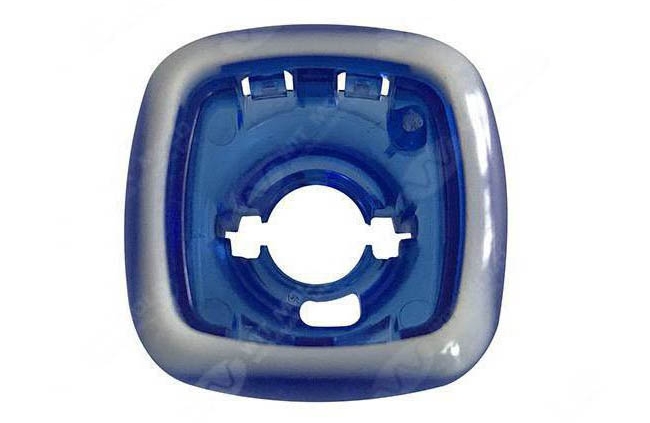Two-Shot Molding vs. Overmolding
What is two-shot molding?
Two-shot molding, also known as dual-shot, multi-shot, or double-shot molding is a subcategory of injection molding that allows engineers to create multi-material or multi-colored parts without adding additional assembly steps.
The two-shot injection molding process is best understood, where different material layers or colors are created by the injection molding machine. The first material is injected into the mold to create the substrate, and other materials or materials around the substrate will be molded. The substrate solidifies and cools before being transferred to another cavity of the mold by hand, a robotic arm, or a rotating plane.
Engineers should know that the speed of two-shot injection molding can be accelerated or slowed down depending on how the substrate is transferred to other cavities of the mold. Hand and robot arm transfer takes longer than rotating planes, but rotating platen molding is more expensive, and is usually just an efficient option for high-volume operation.
In addition, it is essential that the materials of the mold will be easily combined and the molds are properly aligned to prevent deformed parts.
Advantages and disadvantages of two-shot molding
Two-shot plastic injection molding is efficient and economical manufacturing technology. This process can also produce highly durable end parts and assemblies.
From a design point of view, two-shot molding provides designers with a lot of flexibility, because this process can create complex geometric shapes and accommodate multiple colors to make parts more beautiful.
In addition, since one machine manufactures the entire part, no post-processing is required, engineers can drastically reduce manufacturing time, thereby keeping costs low. However, it is worth noting that the cost of the initial two-shot mold may be very high, and the two-shot molding machine is more expensive than the standard injection molding machine. Fortunately, these costs are usually offset by saved labor and assembly costs for mass production.
 What is overmolding?
What is overmolding?
Overmolding, like two injection molding, is a multiple injection molding process that uses two or more different thermoplastics to produce a single final product. This process is ideal for engineers who want to build components that are strong, functional, beautiful, and that will not separate over time.
In order to start the over-molding process, engineers injected a harder over-molding material. Then, the substrate is placed in a complex mold or a complex cavity in the same mold. The molten overmolding material is sprayed into the substrate, or onto the substrate, or sprayed around the substrate. After the molten material is cooled, the substrate and the mold are bonded chemically or mechanically. The entire over-molding process only takes 30 seconds.
Advantages and disadvantages of overmolding
Overmolding and two-shot injection molding have many of the same advantages. They are ideal for the rapid manufacture of durable, reliable, and shock-resistant parts with complex geometries, but over-molding is best suited for low-volume production runs.
Compared with two-shot molding, the design of multiple molds is also easier to carry out, because engineers can use any standard injection molding machine to carry out this process.
In terms of disadvantages, the tolerances of parts manufactured by overmolding are often lower than those of two-shot molding that can be achieved. It is also important to remember that plastic compatibility requirements may limit designers.
We are two-shot molding suppliers. Please feel free to contact us if you are interested in our products.




